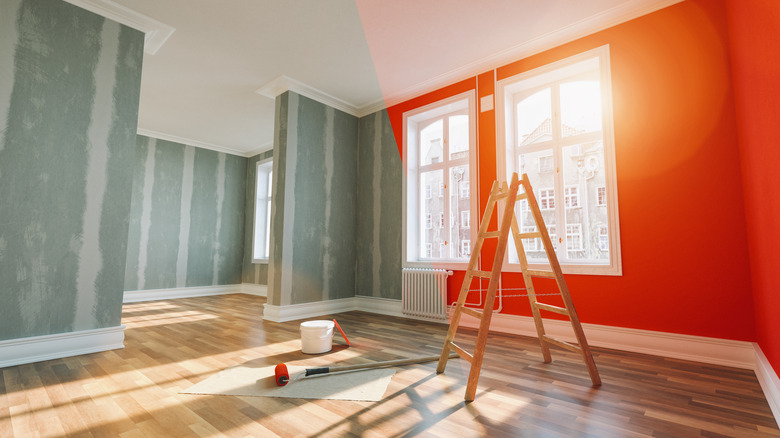What Does Changing The House Footprint Mean In Home Renovation?
The footprint of a home is the overall dimension that the structure commands on a physical property. The demarcated boundaries of your land allow for building and general use in a variety of ways, and one of those options that homeowners have available to them is the expansion of their living space to make greater use of the plot of land that supports their home.
Simply put, changing the footprint of your home is just the renovation of the property to reduce or balloon the size of the interior space (in relation to the lawn space or other external features that your home incorporates), according to Law Insider. The footprint typically doesn't include concrete driveway areas, patio space, and ramps or stairways that lead to the home's structure.
Home footprint alterations can be made in a number of unique ways, and every homeowner will approach the renovation—and expansion—process differently. This means that a footprint change can bring about specialized usage options or add more generalized space to the home, depending on the individual needs of any given homeowner. Some people may require a home office or home studio space while others may be looking for a larger family room to support a growing number of residents in the property.
Regardless of your needs, understanding a few key functions and features of home renovations is essential.
Adding to the footprint can expand financial value
One thing that's abundantly obvious about structural changes to a property is that these renovations can often add to the financial valuation of the home, making for greater resale value down the road.
Bankrate reports that some of the most value-improving renovations come in the form of upgrades (such as in the kitchen, a garage door, or siding of the property). These improvements won't change the footprint on their own, however, and Investopedia is quick to suggest that large-scale home renovations won't always pay for themselves, especially in the short term.
Passion projects, as Investopedia labels them, are perfectly attuned to your precise spatial requirements and home layout specifics; they won't always work for potential buyers, though. This means that simple renovations, like the addition of a game room that can easily be turned into another bedroom, home office, or gym space by a new owner are the best in fiscal infusion.
This doesn't mean that an improvement that actually improves your family's home life isn't worth it. Over the long run, renovations that enlarge the building (and expand your house's footprint) continue to add value based on metrics like price per square foot and location-based intangibles. And even if you opt for a unique addition, it will increase your day-to-day lifestyle and add financial worth in the long term (even if it doesn't hit a break-even figure by the time you want to sell the home).
Consider competing costs and lifestyle value at the outset
Because the dramatic change to your property won't always provide an immediate financial boost, making large-scale structural changes isn't typically a great idea for house flippers or prospective landlords: Both buyers will be looking for rapid returns and minimal initial cash commitments. Lender Kiavi notes that flooring, kitchen, fixture efficiency, and other similar modernizations are much better for property investors to focus on, but also suggests a footprint expansion can be beneficial in some investment circumstances.
More broadly, home expansion projects are best-suited to homeowners who will continue to live in and enjoy a property themselves for many more years. This type of home renovation option acts as both a customization and space creation asset that can make a massive difference in the daily living conditions of the space. Weighing up the costs of a renovation of this magnitude against the improvements to your quality of life is crucial when tackling any change to the property, but particularly when engaging in a lengthy and potentially very costly addition.
These changes can be well worth it for a family seeking additional rooms for in-laws, a new child, or gathering areas that will serve the property and family for many years. Plenty of homeowners take the plunge and expand their homes to accommodate new requirements and dreams, but understanding the value addition and financial constraints that this change can bring to the immediate future is essential.


